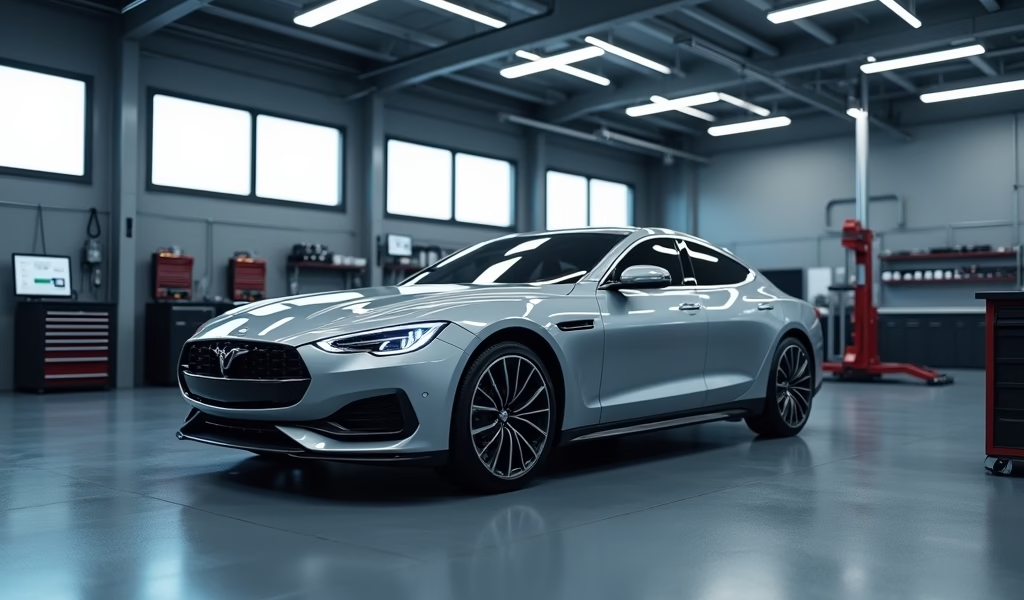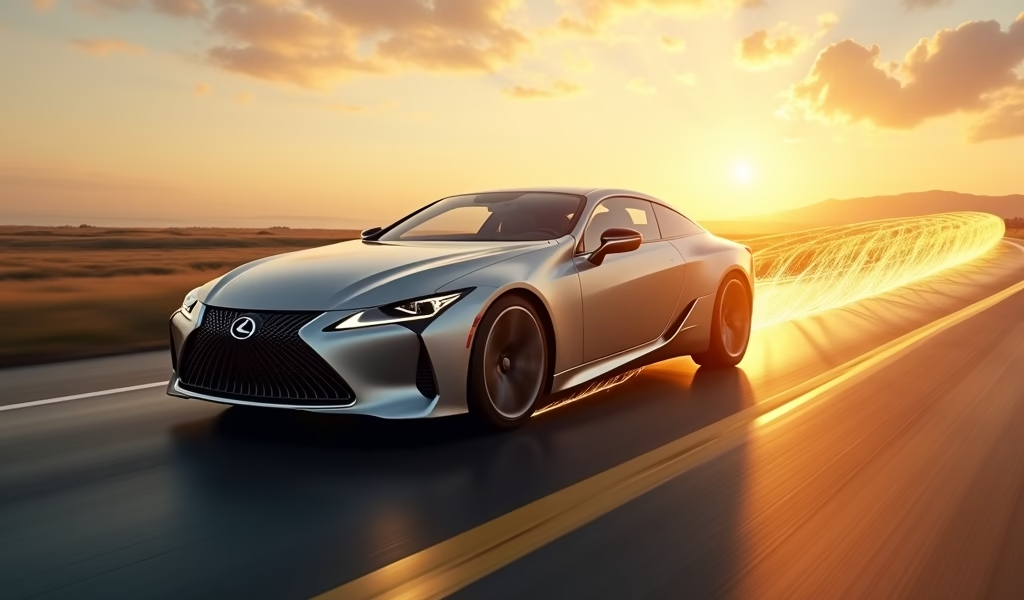Overview
This article offers five strategic approaches to qualifying for zero-interest car financing deals: improving your credit score, timing your purchase during end-of-quarter or model transitions, negotiating effectively on price and other elements beyond the interest rate, leveraging manufacturer-specific programs, and exploring alternative financing options when direct 0% deals aren’t available. The author emphasizes that with proper preparation and knowledge of industry patterns, these seemingly exclusive promotions can become accessible to average buyers while potentially saving thousands over the life of an auto loan.
Table of Contents
- Understanding Zero Interest Car Deals
- Common Obstacles to Qualifying for 0% Interest Deals
- Fix #1: Boost Your Credit Score Strategically
- Fix #2: Timing Your Purchase for Maximum Savings
- Fix #3: Negotiating Effectively Beyond the Interest Rate
- Fix #4: Consider Manufacturer-Specific Programs
- Fix #5: Explore Alternative Financing Options
- Conclusion
- Frequently Asked Questions
Understanding Zero Interest Car Deals
Zero interest car deals sound almost too good to be true – and sometimes, they are. I’ve been helping folks navigate these 0 interest car deals for over 15 years, and I’ve seen both the tremendous savings they can offer and the frustration when people discover they don’t qualify. These promotions, typically offered by manufacturers rather than third-party lenders, allow qualified buyers to finance a vehicle without paying a penny in interest over the loan term.
What’s the catch? Well, these deals are designed to move specific inventory, boost quarterly sales figures, or launch new models. The manufacturer essentially subsidizes the interest cost that would normally go to the finance company. For you, the consumer, this could mean thousands in savings over the life of your loan – but only if you can overcome some common hurdles that prevent many shoppers from qualifying.
Most 0% financing offers require excellent credit scores (typically 700+), sizeable down payments, and shorter loan terms (36-48 months rather than the increasingly common 72-84 months). Additionally, these deals are often limited to specific models or trim levels that the manufacturer wants to promote, not necessarily the vehicle you’ve set your heart on.
Common Obstacles to Qualifying for 0% Interest Deals
Before we dive into solutions, let’s understand what might be standing between you and that coveted 0% interest rate. Having worked with hundreds of car buyers, I’ve identified five primary obstacles that repeatedly trip up otherwise qualified shoppers:
- Credit score limitations – Most zero-interest promotions require FICO scores of 720 or higher
- Limited model availability – These offers typically exclude popular models or higher trim levels
- Shorter loan terms – Many 0% deals are limited to 36 or 48 months, increasing monthly payments
- Seasonal timing – These promotions follow predictable industry patterns that many buyers miss
- Dealer tactics – Some salespeople steer qualified buyers away from these promotions
Understanding these obstacles isn’t just academic – it’s the first step toward overcoming them. Most buyers give up too easily when told they don’t qualify, without exploring the legitimate pathways to making these deals work. In my experience helping buyers at dealerships across the country, I’ve seen that persistence and the right approach can often turn a “no” into a “yes” when it comes to new car financing options.

Fix #1: Boost Your Credit Score Strategically
Your credit score is arguably the biggest factor in qualifying for 0 interest car deals, but many folks don’t realize how quickly you can improve yours with focused effort. I’ve helped customers raise their scores by 30-50 points in just 60 days using some straightforward techniques that address the specific factors auto lenders care about most.
First, obtain your current credit reports from all three bureaus through AnnualCreditReport.com. Look specifically for errors related to payment history and utilization ratios, which impact auto lending decisions most heavily. About 20% of consumers have errors on their reports, and correcting these can provide an immediate boost.
Next, focus on your credit utilization – the percentage of available credit you’re using. This accounts for roughly 30% of your score. Pay down revolving balances to below 30% of your limits (below 10% is even better). This single move can raise your score significantly within a single billing cycle. One customer of mine paid down two credit cards from 80% to 20% utilization and saw a 42-point jump in just three weeks.
If you’re planning your purchase a few months ahead, avoid opening any new credit accounts or making major purchases. Each credit inquiry can drop your score by 5-10 points, and new accounts lower your average account age, both of which make auto lenders nervous. Instead, become an authorized user on a family member’s long-established, responsibly-managed credit card. This can add years to your credit history almost overnight.
Finally, if you’re just a few points shy of qualifying, ask the dealer about rapid rescoring. This service, which usually costs $100-200, updates your credit report in days rather than weeks when you’ve made positive changes that haven’t yet reflected in your score. I’ve seen this technique help numerous buyers qualify for 0% financing who were initially declined.
Fix #2: Timing Your Purchase for Maximum Savings
Timing isn’t just important in comedy – it’s crucial when hunting for 0 interest car deals. The auto industry operates on predictable sales cycles that create windows of opportunity for savvy buyers. After working with dealerships for years, I’ve identified specific periods when manufacturers are most likely to offer their most aggressive financing incentives.
End-of-month opportunities are real, but end-of-quarter is where the magic happens. Manufacturers and dealers face intense pressure to hit quarterly sales targets, especially in March, June, September, and December. During the last week of these months, dealerships often receive additional manufacturer incentives specifically designed to push them over their goals. One December, I watched a dealership extend 0% financing to models that hadn’t qualified all year just to hit their annual numbers.
Model year transitions create another golden window, typically from August through October. As dealers make room for incoming models, manufacturers frequently offer zero-interest financing on outgoing inventory. The vehicles are still brand new – just from the previous model year – often with minimal differences from the incoming models. I helped a family save over $4,800 in interest by purchasing a previous model-year SUV in September rather than waiting for the nearly identical new model.
Holiday sales events, particularly Memorial Day, Labor Day, and year-end holidays, consistently feature the most aggressive financing offers. These nationally advertised promotions are when manufacturers allocate their biggest incentive budgets. The best part? These are legitimate opportunities, not marketing gimmicks. According to industry research from Edmunds, holiday weekends consistently show higher percentages of 0% financing availability than regular weekends.
Sign up for email alerts from manufacturers you’re interested in, as they’ll often notify subscribers about upcoming zero-interest promotions before they’re advertised broadly. This insider knowledge gives you time to prepare your credit and finances before the best deals arrive. Many car buying guides fail to emphasize this preparation phase, but it’s critical for success.
Fix #3: Negotiating Effectively Beyond the Interest Rate
Many shoppers fixate so much on securing 0% financing that they forget to negotiate the other components of the deal, potentially losing thousands in the process. Having sat at countless dealership negotiating tables, I can tell you that zero-interest offers don’t exist in a vacuum – they’re part of a comprehensive deal structure that needs attention.
First and foremost, negotiate the vehicle price independently from financing discussions. Salespeople love to shift the conversation to monthly payments when you mention 0% financing, but stay focused on the vehicle’s selling price. I recommend getting price quotes from at least three dealerships through their internet departments before ever mentioning financing preferences. This creates a competitive bidding situation that can lower your price significantly.
Be aware that dealers sometimes inflate vehicle prices to compensate for the 0% promotion. This practice isn’t universal but happens frequently enough to warrant caution. Research the invoice price and current market values through resources like Kelley Blue Book and TrueCar before negotiations begin. One client discovered the “special 0% financing price” was actually $1,800 higher than what other dealers were asking for the same model with standard financing.
Many manufacturers offer a choice between 0% financing OR a cash rebate, but rarely both. Do the math carefully – sometimes taking the rebate and securing outside financing at a competitive rate (say 2.9%) results in greater savings over the life of the loan, especially on lower-priced vehicles or shorter terms. I recommend using an online car loan calculator to compare both scenarios with your specific numbers.
Finally, don’t forget about often-overlooked negotiation points like trade-in value, extended warranties, and dealer add-ons. Dealerships may be less flexible on these elements when offering 0% financing, but they’re still negotiable. I’ve helped customers get market-leading trade-in values even while securing zero-interest financing by being prepared with competitive offers from CarMax or online valuation services.

Fix #4: Consider Manufacturer-Specific Programs
Not all zero-interest programs are created equal, and knowing the nuances between different manufacturers can give you a significant edge. After years helping customers navigate these waters, I’ve noticed that each automaker structures their 0 interest car deals with distinct patterns and qualifications that savvy buyers can leverage.
Toyota and Honda typically offer their most aggressive zero-interest promotions on specific models they’re looking to move, rather than across their entire lineup. These brands maintain strong resale values and rarely discount heavily, so when they do offer 0%, it’s usually limited to 36-month terms on models like the Camry, Corolla, or Civic. The good news? Their credit score requirements are sometimes more flexible than luxury brands, occasionally dipping to 680 for well-qualified buyers.
American manufacturers like Ford, Chevrolet, and Ram frequently offer the longest-term 0% financing, sometimes extending to 60 or even 72 months during major promotions. These brands also more commonly combine 0% with additional cash incentives, especially on trucks and SUVs nearing model-year transitions. One family I worked with saved over $12,000 combining zero-interest financing with model-year-end rebates on a Ford F-150.
Luxury brands like BMW and Mercedes approach zero-interest differently, often disguising it as “subsidized leasing” with exceptionally low money factors (the lease equivalent of interest rates). Their programs frequently target specific models with higher profit margins or certified pre-owned inventory. I’ve helped clients secure effectively 0% deals on luxury vehicles by understanding these manufacturer-specific approaches to moving inventory.
Hyundai and Kia deserve special mention for their “first-time buyer” programs, which occasionally offer 0% financing to customers with limited credit history but strong income verification. These programs are perfect for recent graduates or young professionals searching for where to buy their first car with favorable terms.
Keep in mind that manufacturer captive finance companies (like Ford Credit, GM Financial, or Toyota Financial Services) have more flexibility with their approval criteria than third-party lenders. They’re motivated to sell vehicles, not just loans, which can work in your favor if you’re borderline qualified but committed to their brand.
Fix #5: Explore Alternative Financing Options
Sometimes the direct path to 0% financing through the manufacturer isn’t available, but alternative routes can lead to effectively the same destination. After helping hundreds of car buyers, I’ve discovered several creative approaches that mimic or even improve upon traditional zero-interest offers.
Credit unions often offer “relationship rates” that can be startlingly competitive. These institutions typically base lending decisions on more than just credit scores, considering your overall financial picture and banking history. I’ve seen members secure rates as low as 0.99% on new vehicles, particularly after establishing direct deposit and automatic payments. The difference between true 0% and 0.99% on a typical loan amounts to just a few dollars monthly – a small price for the increased flexibility on vehicle choice.
Community banks sometimes offer “CD-secured auto loans” where you secure part of your loan with a certificate of deposit. This dramatically reduces their lending risk, allowing them to offer near-zero rates even to borrowers who wouldn’t qualify through traditional means. One client with a 650 credit score secured an effective rate of 1.25% using this approach when he was declined for manufacturer 0% financing.
Manufacturer rebate stacking can create a mathematically superior alternative to 0% financing. By combining available cash rebates with low-rate financing from outside sources, you can effectively create a below-zero interest scenario. I worked with a family who saved more by taking $4,500 in available rebates and securing 2.9% credit union financing than they would have with the manufacturer’s 0% option that excluded rebates.
Don’t overlook refinancing opportunities. Some buyers secure whatever financing gets them in the vehicle initially, then refinance to better terms 6-12 months later after demonstrating payment reliability or improving their credit. Several online lenders now specialize in auto refinancing with minimal fees and streamlined processes. This approach works particularly well for buyers who know their credit score is improving but need a vehicle immediately.
Finally, some buyers have successfully negotiated dealer financing contributions, where the dealership buys down your interest rate by paying points to the lender. This approach works best at higher-volume dealers who receive manufacturer incentives for financing volume. I’ve helped clients negotiate dealer contributions that brought their effective rate to zero without requiring manufacturer special financing programs.
Conclusion
Navigating the world of 0 interest car deals doesn’t have to be a frustrating maze of rejection and confusion. With the right approach and timing, these seemingly exclusive offers become much more accessible to the average car buyer. Remember that preparation is your strongest ally – understanding your credit position, researching manufacturer patterns, and timing your purchase strategically can make all the difference.
Don’t be discouraged if you don’t immediately qualify for advertised zero-interest promotions. The five fixes we’ve explored – boosting your credit score, timing your purchase strategically, negotiating effectively, leveraging manufacturer-specific programs, and exploring alternative financing – provide multiple pathways to achieving the same financial outcome: driving away in a new vehicle without the burden of interest payments.
Most importantly, remember that a true “good deal” considers the total cost of ownership, not just the interest rate. Sometimes a slightly higher rate with a lower purchase price or valuable included maintenance package represents better overall value. Take your time, do your homework, and approach the process with confidence knowing you’ve got multiple strategies to secure the best possible financing for your next vehicle.
Frequently Asked Questions
Are 0% interest car deals really free financing?
Yes, these deals offer loans with no interest charges, but the cost is typically built into the vehicle price or offset by reducing other incentives. Manufacturers essentially pay the interest to the finance company on your behalf.
What credit score do I need for 0% financing?
Most zero-interest promotions require FICO scores of 720 or higher, though some manufacturers occasionally lower this requirement to 680 during aggressive sales periods. Credit unions and community banks may offer more flexibility on score requirements.
Why do dealers sometimes discourage 0% financing?
Dealers often earn less commission on zero-interest deals compared to standard financing where they mark up the interest rate. They may also face stricter requirements from manufacturers for these promotions, reducing their flexibility in other negotiation areas.
Can I get 0% financing on any car model?
No, zero-interest promotions are typically limited to specific models, usually those with excess inventory or aging stock. Popular models and limited editions rarely qualify for these offers unless they’re being replaced by new designs.
Is it better to take 0% financing or a cash rebate?
It depends on your specific situation and the size of the rebate offered. For lower-priced vehicles or shorter loan terms, the rebate often provides greater savings. For expensive vehicles or longer terms, zero-interest financing typically delivers more value.


Pingback: Zero Percent Car Deals: 7 Essential Tips - knowsyourcar.com